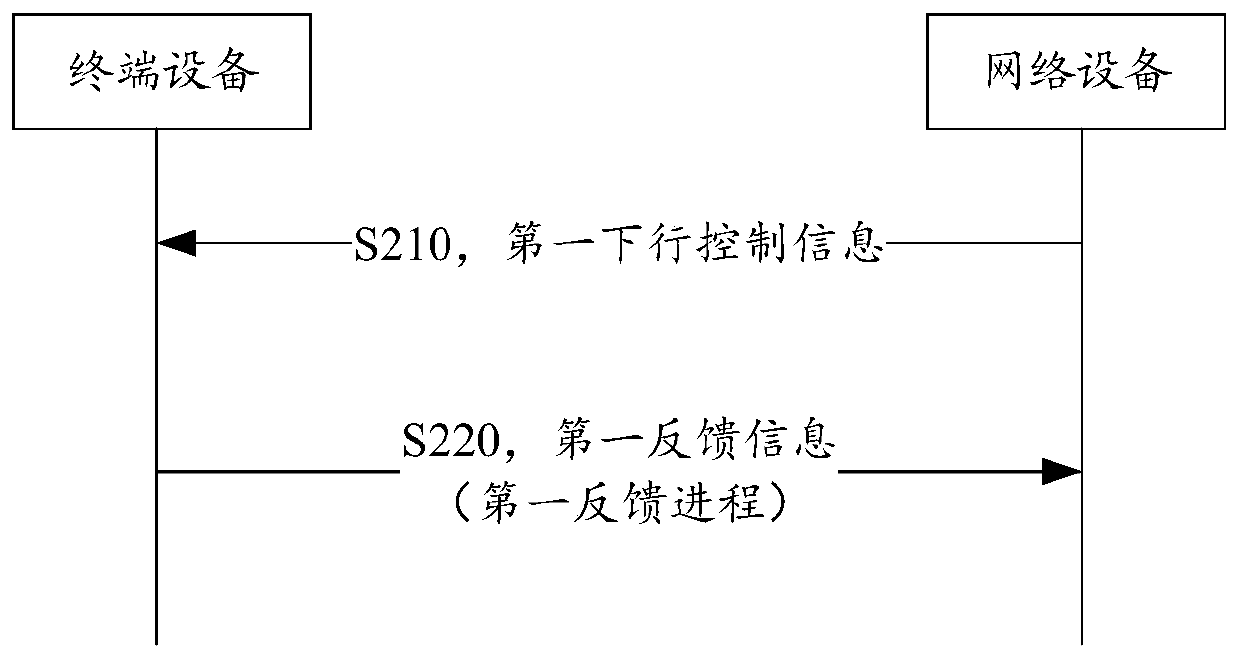Method and device for sending feedback information and method and device for receiving feedback information
A technology for receiving and feeding feedback information, applied in the field of sending feedback information, can solve the problems of increased transmission delay, terminal equipment failing to send feedback information in time, and network equipment failing to know in time, and achieving the goal of reducing transmission delay. Effect
- Summary
- Abstract
- Description
- Claims
- Application Information
AI Technical Summary
Problems solved by technology
Method used
Image
Examples
Embodiment Construction
[0065] The technical solution in this application will be described below with reference to the accompanying drawings.
[0066] First introduce the application scenario of this application, figure 1 is a schematic diagram of a communications system suitable for use in this application.
[0067] The communication system 100 includes a network device 110 and a terminal device 120 . The terminal device 120 communicates with the network device 110 through electromagnetic waves.
[0068] In this application, the terminal device 120 may include various handheld devices, vehicle-mounted devices, wearable devices, computing devices or other processing devices connected to a wireless modem with wireless communication functions, for example, the Third Generation Partnership Project (3 rd Generation Partnership Project (3GPP) defines user equipment (user equipment, UE), mobile station (mobile station, MS), soft terminal, home gateway, set-top box, site, etc.
[0069] The network devi...
PUM
 Login to View More
Login to View More Abstract
Description
Claims
Application Information
 Login to View More
Login to View More - R&D
- Intellectual Property
- Life Sciences
- Materials
- Tech Scout
- Unparalleled Data Quality
- Higher Quality Content
- 60% Fewer Hallucinations
Browse by: Latest US Patents, China's latest patents, Technical Efficacy Thesaurus, Application Domain, Technology Topic, Popular Technical Reports.
© 2025 PatSnap. All rights reserved.Legal|Privacy policy|Modern Slavery Act Transparency Statement|Sitemap|About US| Contact US: help@patsnap.com



